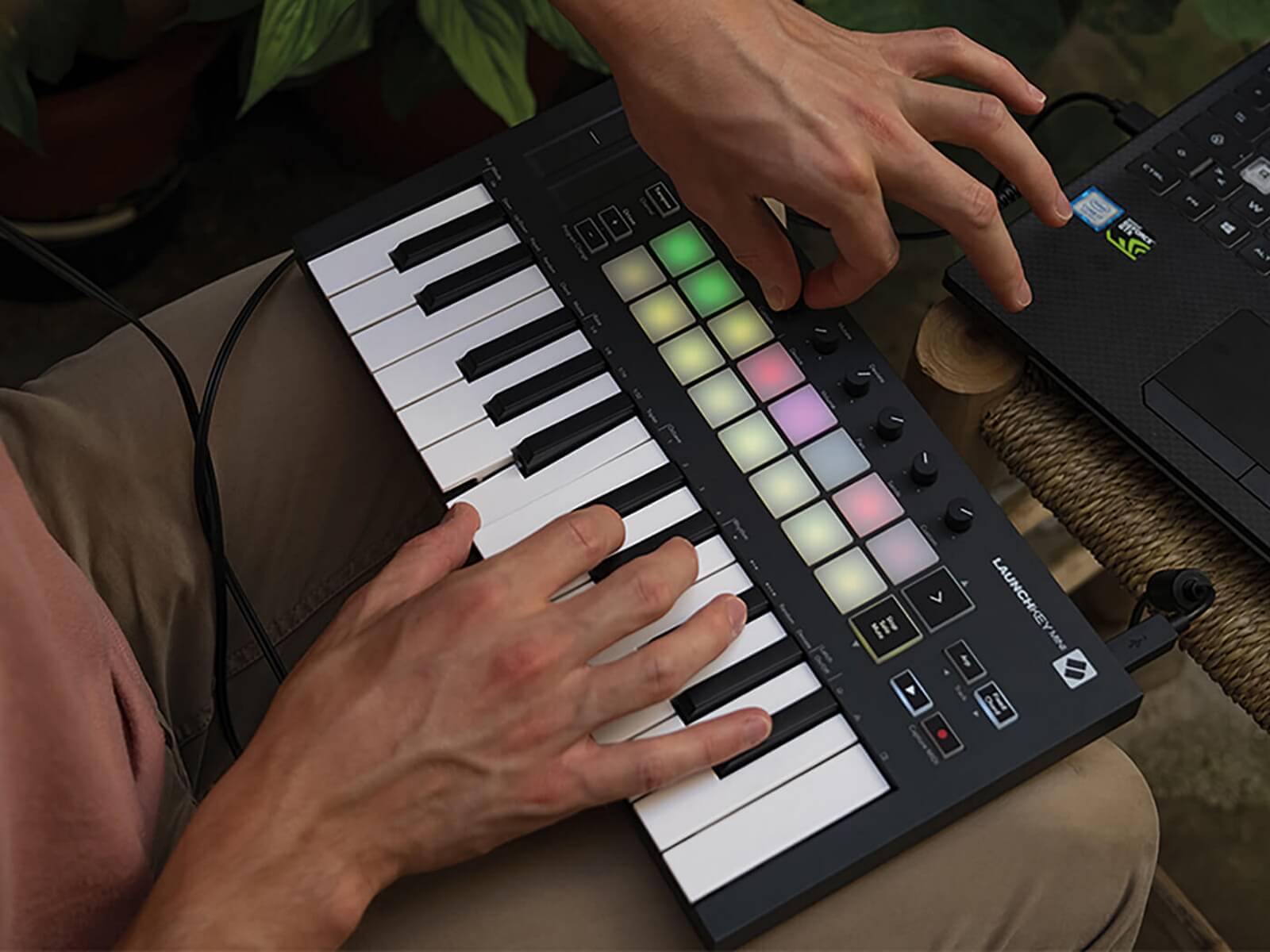
Are you looking for the best budget MIDI keyboards? You have come to the right place. In this guide, we look at the best MIDI keyboards under $200, exploring some of the great features you can enjoy without spending a fortune. Keyboards have come a long way in recent years, but there are still some products that don’t quite do a great job, so you need to know how to avoid these.
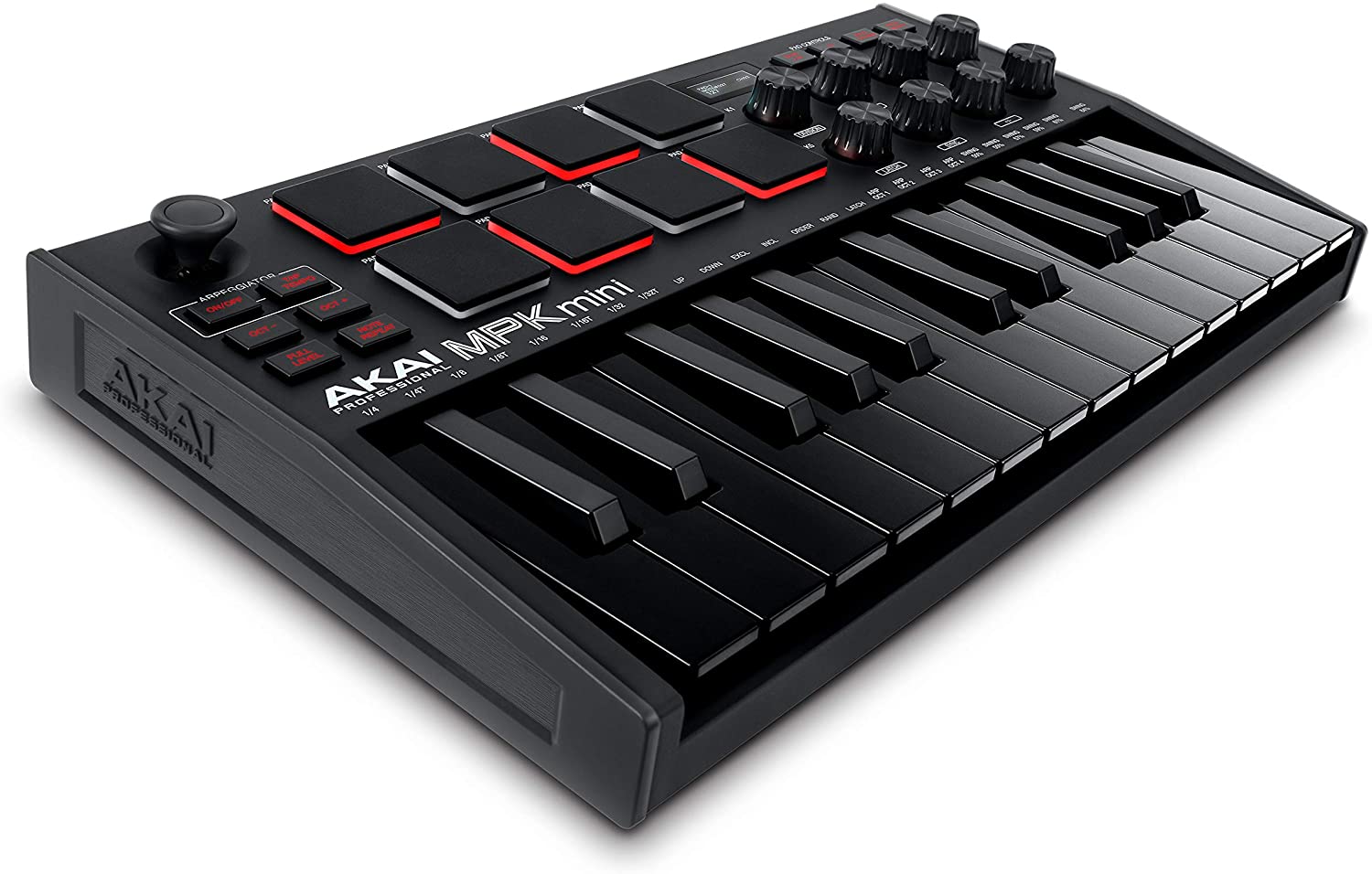





Over $100 is a decent budget for a MIDI keyboard, and if you make the right buying decisions then you may be surprised at just how great your options are. We’ve looked at the top features for these keyboards including the number of keys, pads and other controllers, dimensions, weight, and any included software to help you make the right choice. Paired with the right software and speakers, you might be able to create a live sound or home-studio powerhouse without breaking the bank.
| № | Name | Rating | |
|---|---|---|---|
| 1 | AKAI Professional MPK Mini MK3 Black |
9,9
|
Check price |
| 2 | M-Audio Keystation 61 MK3 |
9,7
|
Check price |
| 3 | Alesis V49 |
9,6
|
Check price |
| 4 | Arturia MiniLab MkII 25 Slim-Key Controller |
9,5
|
Check price |
| 5 | Native Instruments Komplete Kontrol M32 |
9,4
|
Check price |
| 6 | Novation Launchkey 25 MK3 |
9,3
|
Check price |
Other features: OLED display; 8 assignable backlit pads and 8 assignable 360° knobs; 1,500+ sounds

In spite of being very small, this MIDI keyboard is certainly a powerful option. It only has 25 keys so don’t expect to be playing any huge concertos on it, but it is great for playing a short melody and producing music at home or even on the go.
As well as the 25 keys there are 8 assignable pad controllers, you can use these with drum sounds or sound effects. There’s an input for you to add a sustain pedal and this is totally USB powered so you can use it without having to take up another valuable power outlet.
The pads are backlit, making it one of the best midi keyboards under $200 for live performance. You can always see what you are doing.
This MIDI keyboard has 1,500 sounds included and lets you control them with pitch, modulation and even arpeggiator controls, for a world of new sounds.
Other features: iOS compatibility; premium software set included

M Audio is known for providing value for money. The M-Audio Keystation 61 MK3 is the best semi weighted midi keyboard under $200 and is a good option for those who are classically-trained musicians, or just anyone who is capable of playing the piano with both hands! The 61-key model gives a world of possibilities for playing songs with loads of expression. This is further helped by the fact that the keyboard has semi-weighted keys which mimic the feeling of an acoustic piano as you press down on the keys.
Another great thing about this keyboard is the iOS compatibility. This means if you are using an Apple device like an iPhone, you can hook it up to Garageband and use this to generate endless songs. It works with other software and apps, too.
Midi and USB outputs make it a flexible and versatile keyboard. It also comes with a software suite including a DAW and virtual instruments so you can play endless sounds without it costing you any more than the original cost of the instrument.
Other features: software set included; 122 preset sounds and over 2,000 studio-grade sounds; 8 velocity- and pressure-sensitive backlit pads

On to the best 49-key MIDI keyboard under $200. If you are looking to save some money, and strike a balance between portability and playability, 49 keys could be the perfect size. The keys on this model are velocity-sensitive. While not weighted, they let you control the velocity and volume of the notes.
This has assignable knobs and buttons to go along with the keys, so there are many different controls you can use either in a live or studio environment. These are pressure-sensitive, so great for “finger drumming” or triggering sound effects.
It has USB-MIDI connection and comes with a software set including thousands of high-quality sounds, plus it works intuitively with a lot of other music software. It comes with a version of Ableton Live, which is very popular music production software, especially for a lot of electronic genres.
Other features: software set included; 16 rotary encoders (2 clickable); 8 velocity and pressure sensitive pads with RGB backlighting; 500 of the V-Collection 8 presets
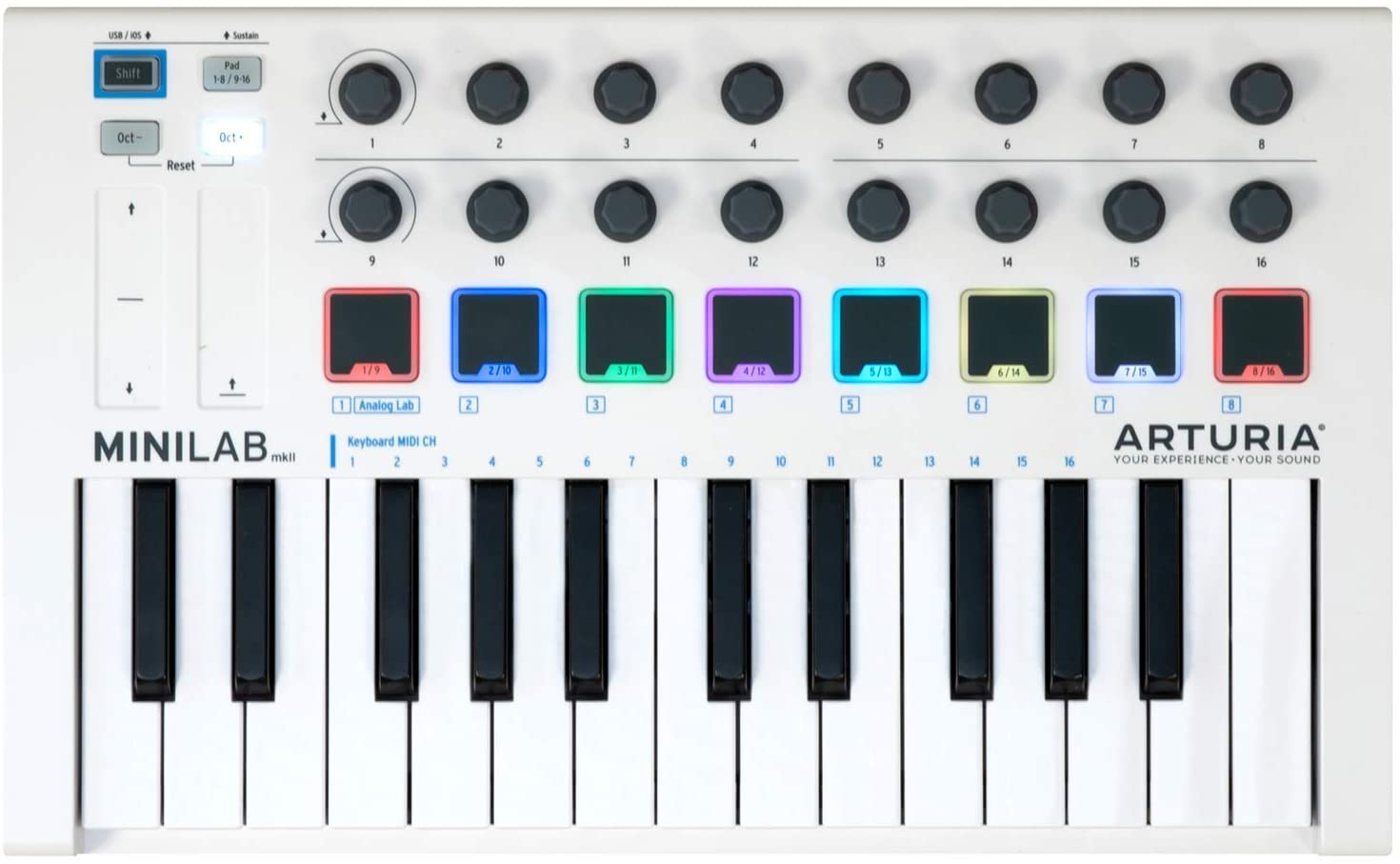
Arturia makes some great software synths, and the hardware to control them, including this tiny Arturia MiniLab MkII.
This is designed to be slimline. It doesn’t have full-size keys and there are only 25 of them, but this makes sense when you consider it is designed for the live or laptop musician. It’s easy to put this in your bag and head off to a gig or compose something on the train.
There is Arturia software included as well as a Lite DAW. This is great for people who are looking to start their production journey. They also include 500 presets for the V-Collection synth.
There are 16 encoders that you can assign as well as 8 pads, and all of this is packed into such a tiny and lightweight package. In spite of this, it isn’t flimsy or easy to break either. It’s backlit, so if you want to use this model on stage, you can see exactly what you’re doing at all times.
Other features: OLED display; 8 touch-sensitive knobs; Ableton Live 10 Lite included; four-directional push encoder; Smart Play
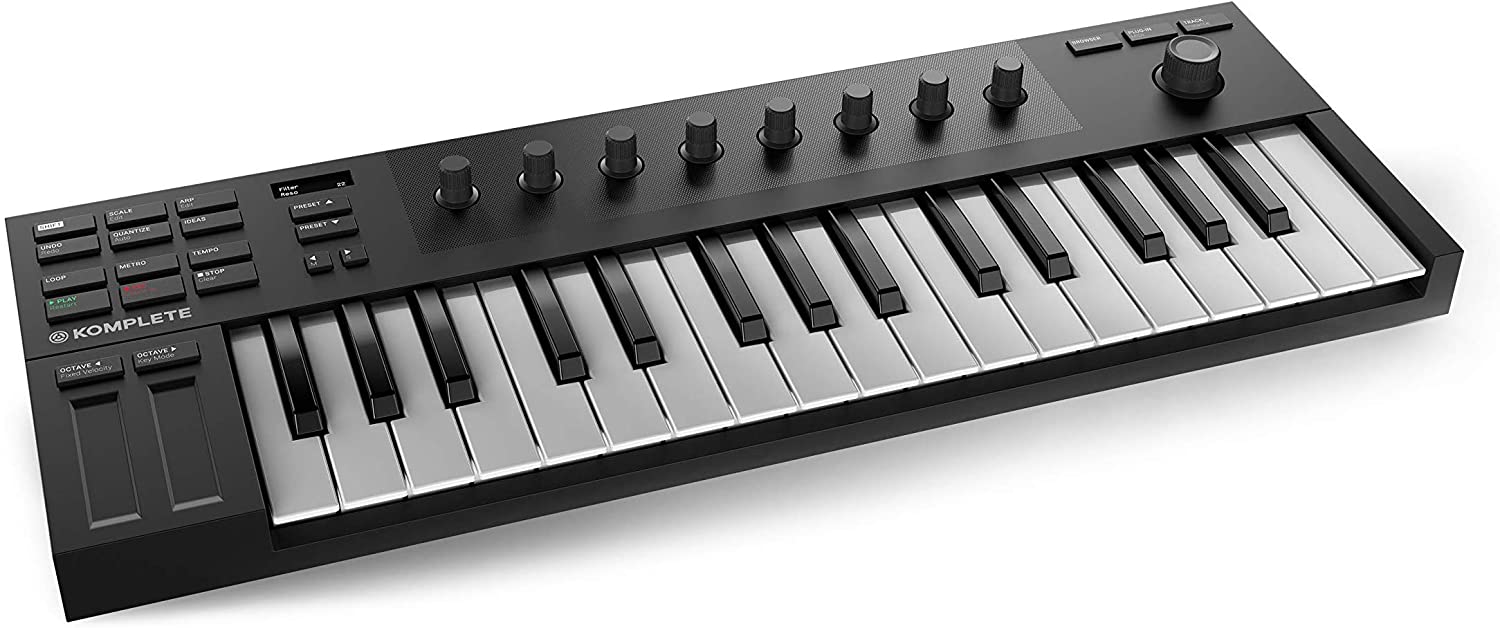
This is another mini USB midi keyboard under $200, which has been designed to work intuitively with NI. Native Instruments is a big name in the world of synthesizers and their virtual instruments are taking the world by storm, so it makes sense that they would release hardware, too.
This includes Ableton Live Lite, has an OLED display and knobs as well as keys. It even has the option to add a foot pedal, surprising for such a small model of keyboard.
You can use this with software that isn’t Native Instruments. That means that you can assign the knobs and controllers to other things, but to get full, intuitive use out of it you really need to be using NI suites. That can mean an extra investment if you don’t already own it.
Other features: 16 RGB backlit velocity-sensitive pads; 3 chord modes; software set included
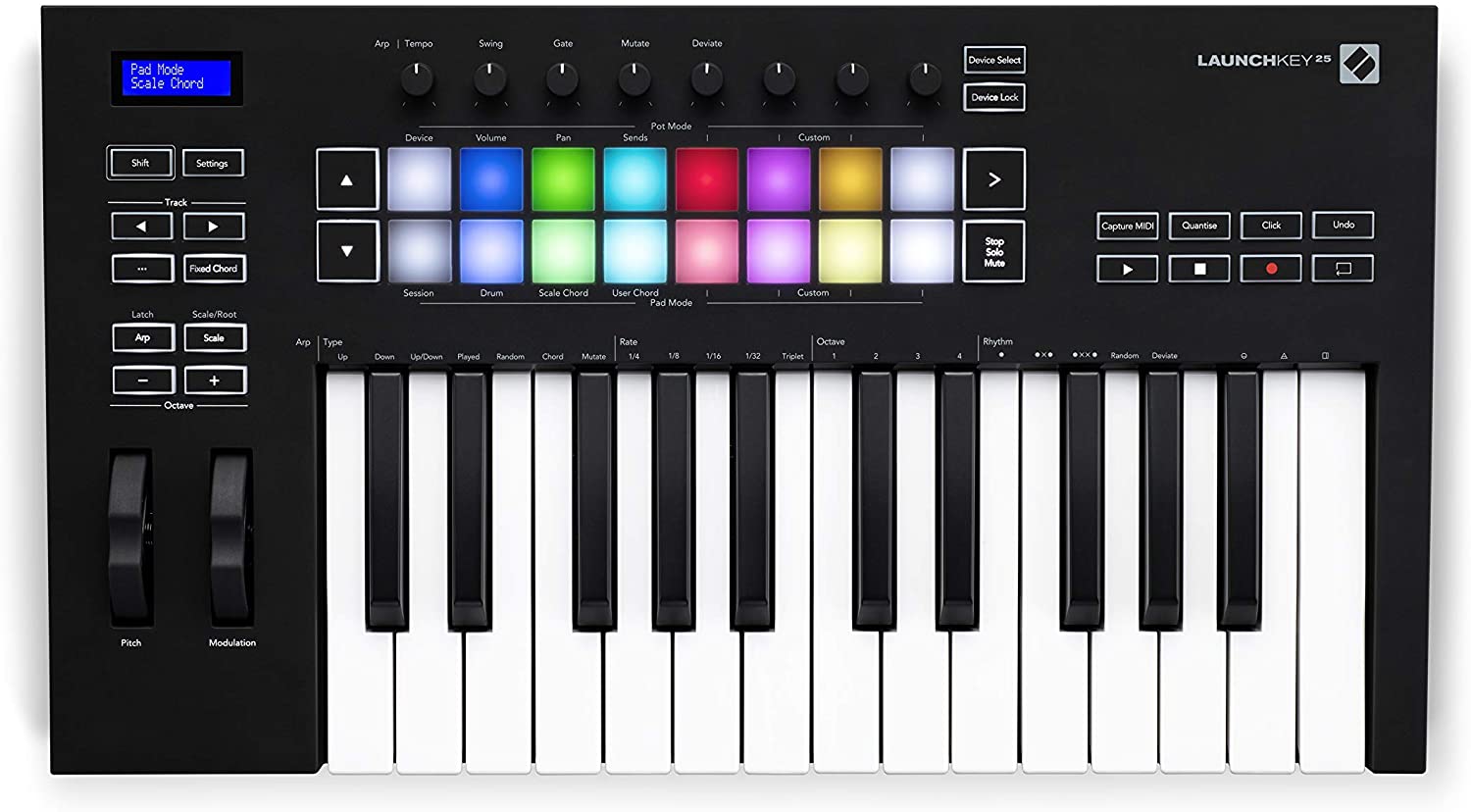
The Novation Launchkey 25 MK3 would be higher up on our list if it was a bit more lightweight, as it isn’t quite as good for putting in a laptop bag. Honestly, there’s not much weight in it, and the features are fantastic, too.
The three different chord modes make it easy to trigger chords, so you can quickly come up with song ideas or play live in front of people.
The keys and pads are backlit so you can see what you’re doing at all points.
The compatibility with other equipment is great, too, and a MIDI output can be run to other hardware synths for control.
Like many of the other best midi keyboards under $200, it comes with software to get you started.
There’s also an inventive “scale mode” which helps you to only play notes within a certain scale, so you’re always in key and sounding great.
There is an awful lot of choice when it comes to MIDI keyboards. These products have started to include more and more features as technology, specifically music technology, has grown a lot in recent years. If you are looking for a midi controller under $200, it is vital that you understand some of the features and functions, and what they mean for your decision. It could even be that your software or production style help inform the decision you make.
$200 is a decent budget for a MIDI controller, especially if you don’t want something that is full-sized, that will play like an 88-key piano would.
Every MIDI keyboard on this range should easily link to your music software and allow you to play melodies and chords, but some also let you control different parameters of virtual instruments and software.
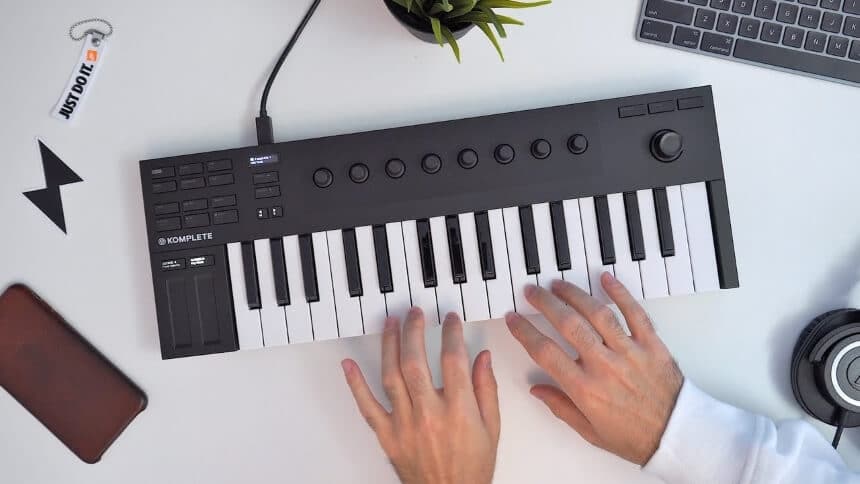
All MIDI keyboards will have keys. That’s something of a given! However, the majority now also come with other options and control sets that you can use to control software. Pads are useful for drum sounds and sound effects, knobs can control volumes and filters, and faders can turn up and down different instruments or effects. All of this should be assignable within the software. You might just want a simple set of keys.
There are some standard sizes for MIDI keyboards:
The key “action” relates to how it feels when you play the keys. The synth action is the most common, this uses a spring for the keys to bounce back up. It also allows the keys to be velocity sensitive so the harder you hit, the more volume.
Semi-weighted combine weights with the springs for a more true-to-real-life feel, mimicking a piano.
Fully weighted or hammer action feels a lot like a piano, with tiny hammers triggering the notes, but it isn’t the sort of feature you’ll find in many budget keyboards. If you are used to this, for instance, if you play acoustic piano normally, the keys will feel different.
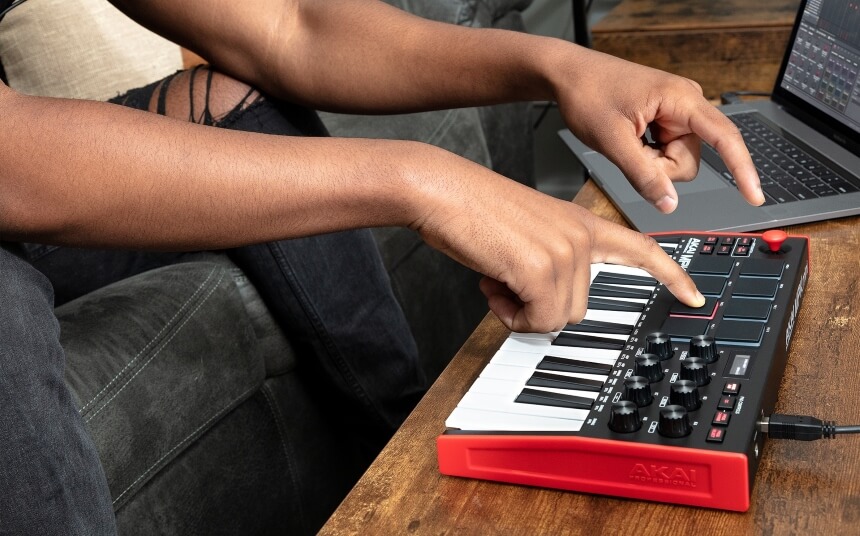
Models like the M-Audio Keystation 61 MK3 also have MIDI outputs, meaning a specific MIDI cable can be run to other MIDI compatible hardware like synthesizers. Whether you need this will depend on the equipment you already have.
This is a fairly self-explanatory feature. If you need a small keyboard then the dimensions and weight are definitely something you should check out in some detail. The Native Instruments Komplete Kontrol M32 weighs just 2.2 pounds. It’s perfect for putting in a backpack.
The warranty is always important when buying electronics. Many manufacturers will give you 12 months of protection should anything go wrong. This should enable you to get a refund or replacement, as long as you didn’t mistreat the keyboard!
The AKAI Professional MPK Mini MK3 gets a strong rating of 9.9 out of 10 due to the fact it has an incredible amount of sounds included, and the fact that it has brilliant pads for use triggering drum sounds. It even has an arpeggiator.
The M-Audio Keystation 61 MK3 has semi-weighted keys and gives the same sort of feel as a digital or acoustic piano. We’ve rated it 9.7 out of 10, it’s also one of the best MIDI keyboards under $200 if you want to use a mobile device, it works with iOS seamlessly.
The Alesis V49 has a rating of 9.6 out of 10. The 49-key size is a great middle ground, allowing you to play two-handed but still retaining an element of portability.